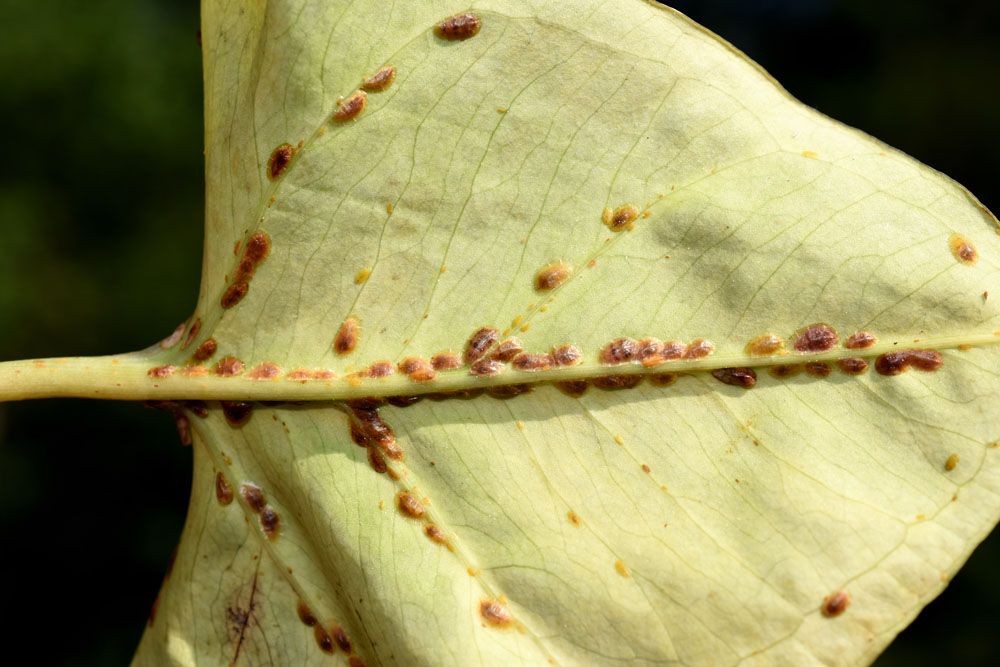
Scale
Scale disease:
Many houseplants suffer from the scale. Scale insects are sap-feeding insects called after the waxy scale or shell that covers their body. Scale insects can damage and even kill trees, shrubs, and houseplants, but full plant death is uncommon. Let’s learn more about detecting scale and controlling it.
Description:
Scale insects are frequent pests of both outdoor and indoor plants. They, like other plant pests, feed on the sap and nutrients that flow through the plant. Scale insects eat by sucking nutrients from plants with tiny, straw-like mouthparts. Unlike some of the other plant pests that primarily eat on leaves, Scale insects can be found on leaves, bark, and other plant components such as fruits. Trees, shrubs, and perennial plants are the primary food sources for scale insects. Because scales feed on dark portions of the plant, such as the bark, some kinds, and varieties of scale insects can easily blend in. The majority of scale insects are tiny and inconspicuous. Scale insects range in size from 1/8 to 12 inches. Color, shape, texture, and other characteristics differ depending on the species.
Types of scale insects:
Scale insects are classified into two types: armored scales and soft scales. While the two species of scale insects have some similarities, there are certain distinctions worth mentioning that might aid in recognizing and distinguishing the two.
The life cycle of scale insects:
Scale insects have a basic existence. Adult females deposit eggs beneath their protective coating, which hatches over a one to three-week period. The freshly hatched nymphs (called crawlers) emerge from this covering and wander about the plant until they find a good eating spot. Young nymphs eat by inserting their piercing mouthparts into the plant and building their armor as they mature into immobile adults. They do not pupate and, in greenhouses, may have multiple overlapping generations per year. Each year, scales may pass through one or more generations.
Damage caused by scale insects:
Scale-damaged plants look withered and sickly. Leaves turn yellow and may drop from the plant. They may also have sticky sap or a black fungus on the leaves and stems. Heavily infested plants produce little new growth. If scale insects are not controlled, the death of infected plants is possible. Scale insects eat sap from trees and plants using piercing-sucking mouthparts. Sap feeding by scale insects can cause yellowing or withering of leaves, stunting or unthrifty look of plants, and, in severe infections, death of all or part of the plant. Weakening plants may lose vitality and become more vulnerable to harm caused by drought, harsh winters, insect attacks (like borers), or disease infection. Scale insects are invasive and will infest other plants, so move infested plants away from healthy ones.
Control:
Homemade Control:
Many individuals choose to utilize DIY plant scale control. Insecticidal soap is a non-hazardous and effective alternative to traditional pesticides. In place of commercial insecticide soaps, you can use bleach-free dishwashing liquid (1 1/2 teaspoons per quart or 7 mL per liter of water). Oil spray may also be used to control plant scaling at home. One gallon (1 /L) water, two teaspoons (29.5 mL) cooking oil, and two tablespoons (29.5 mL) baby shampoo.
Natural control:
Scale insect populations can be greatly reduced by parasitoids (tiny parasitic wasps) and predators (such as lady beetles). Other natural mortality causes (such as bad weather) may impact populations, resulting in year-to-year fluctuations. The existence of biological and natural controls can keep scale populations low, eliminating the need for insecticidal treatments. Do not treat if the scale numbers fall (or remain at a low level). Plants grown for sale must be treated to keep pests away.
Mechanical control:
Mechanically eliminating scale insects may be feasible in some cases, such as minor infestations on houseplants or small trees and shrubs. To minimize scale populations, heavily infected stems can be cut away and thrown.
Chemical Control of scale insects:
When natural enemies and mechanical measures are insufficient to avoid plant damage, insecticide treatments may be necessary. For treating infected trees and shrubs, three chemical control methods are available:
- Squirt dormant oil before bud break.
- Apply a contact insecticide in summer when the crawlers are active.
- Use a systemic insecticide.
